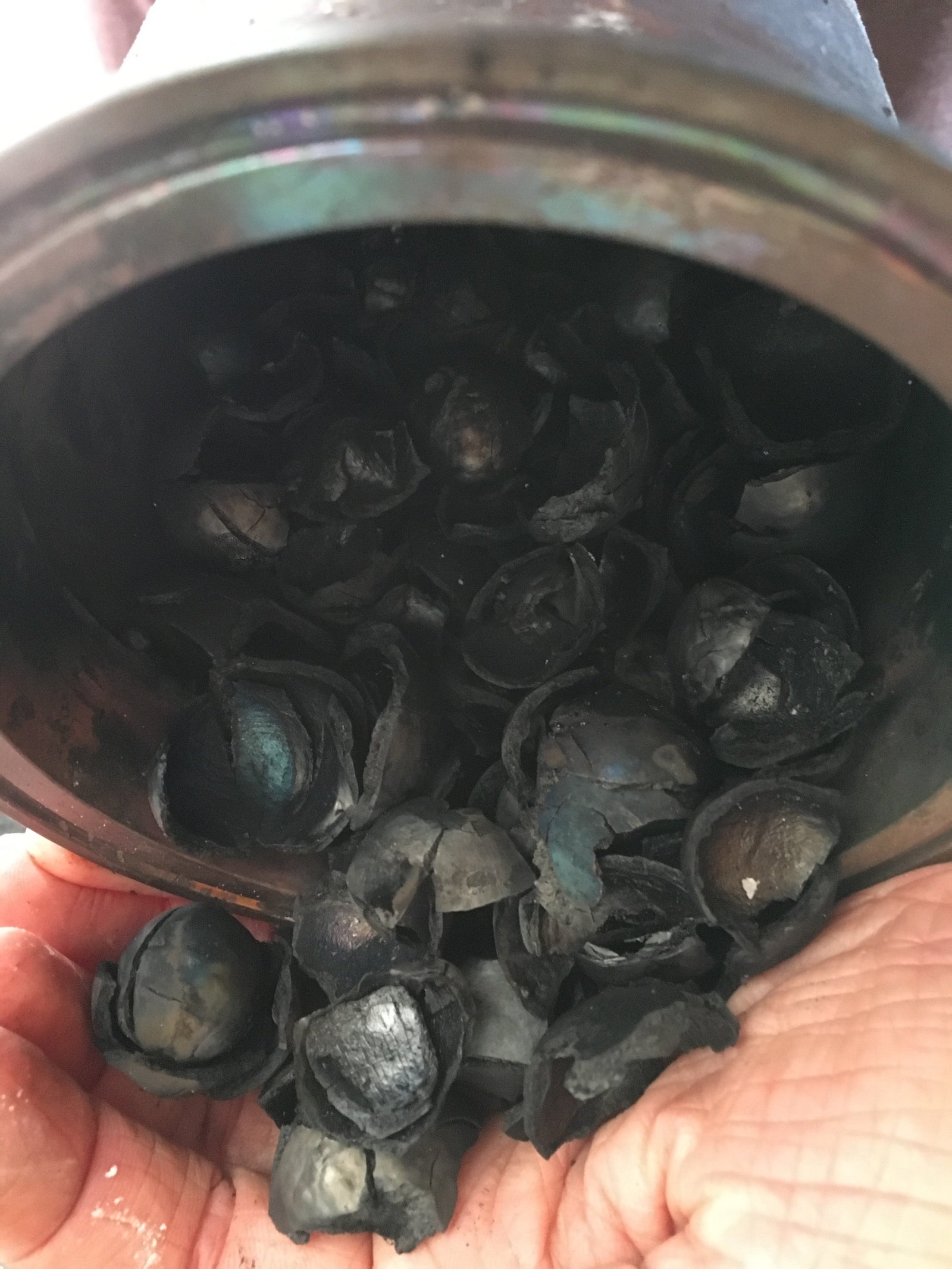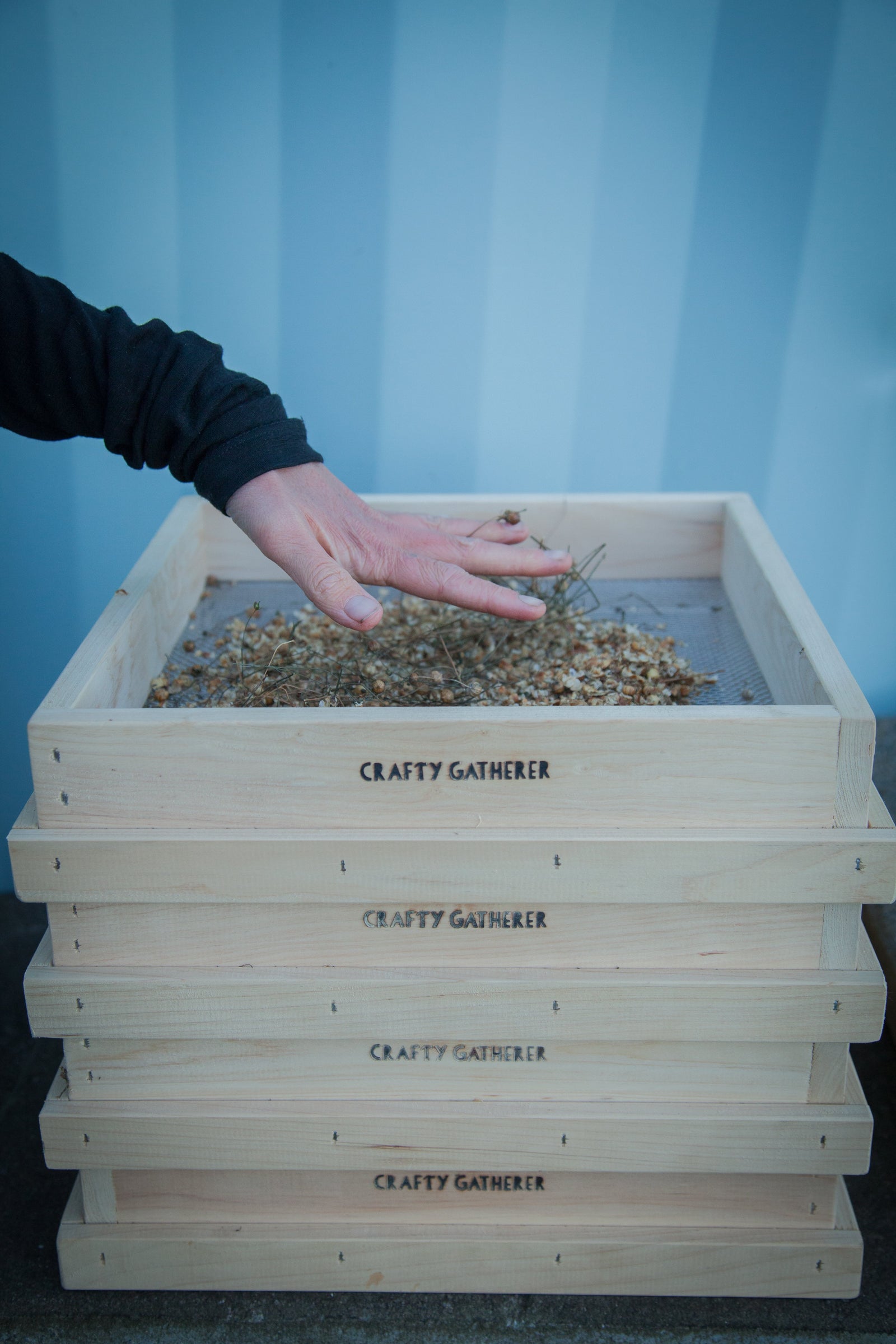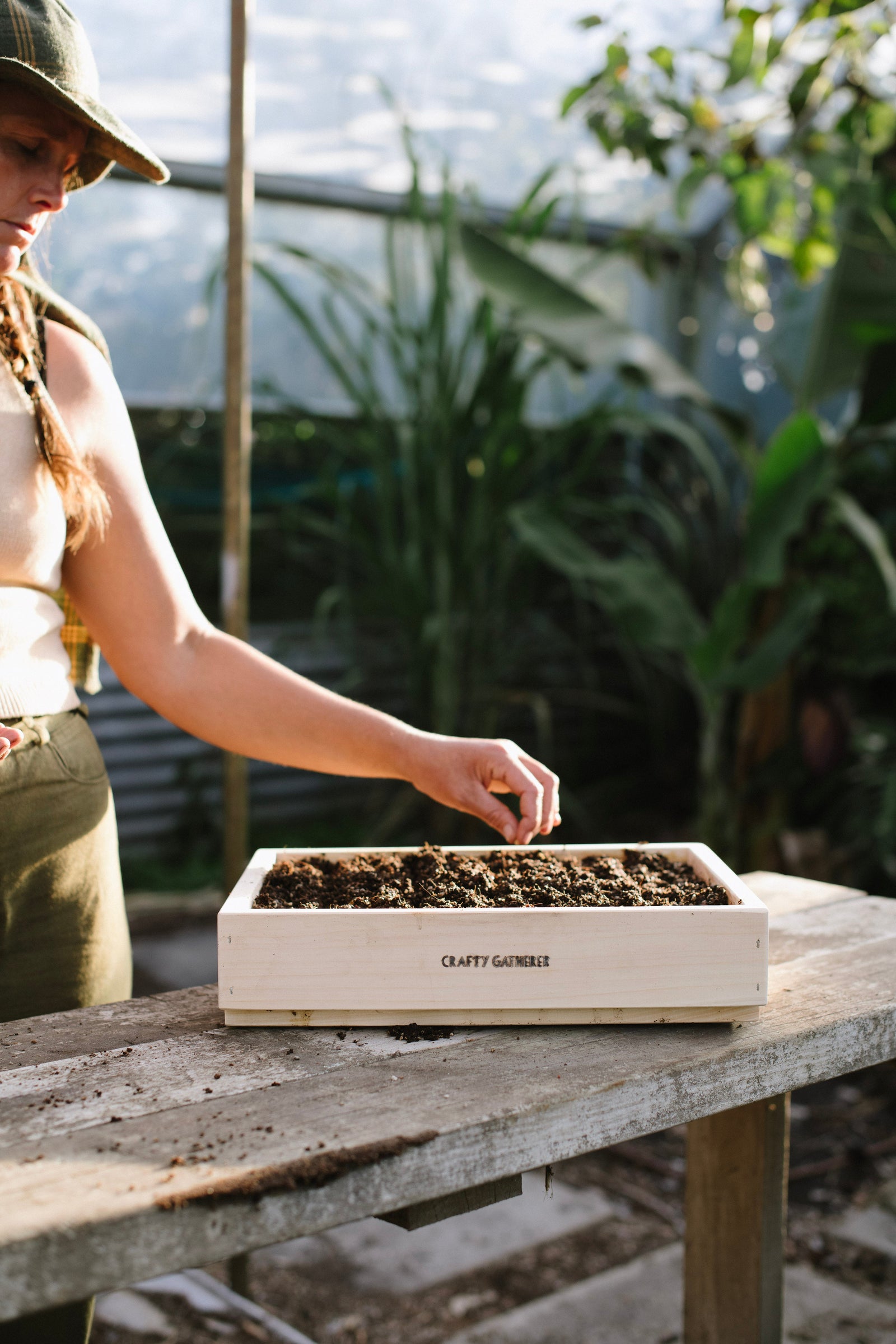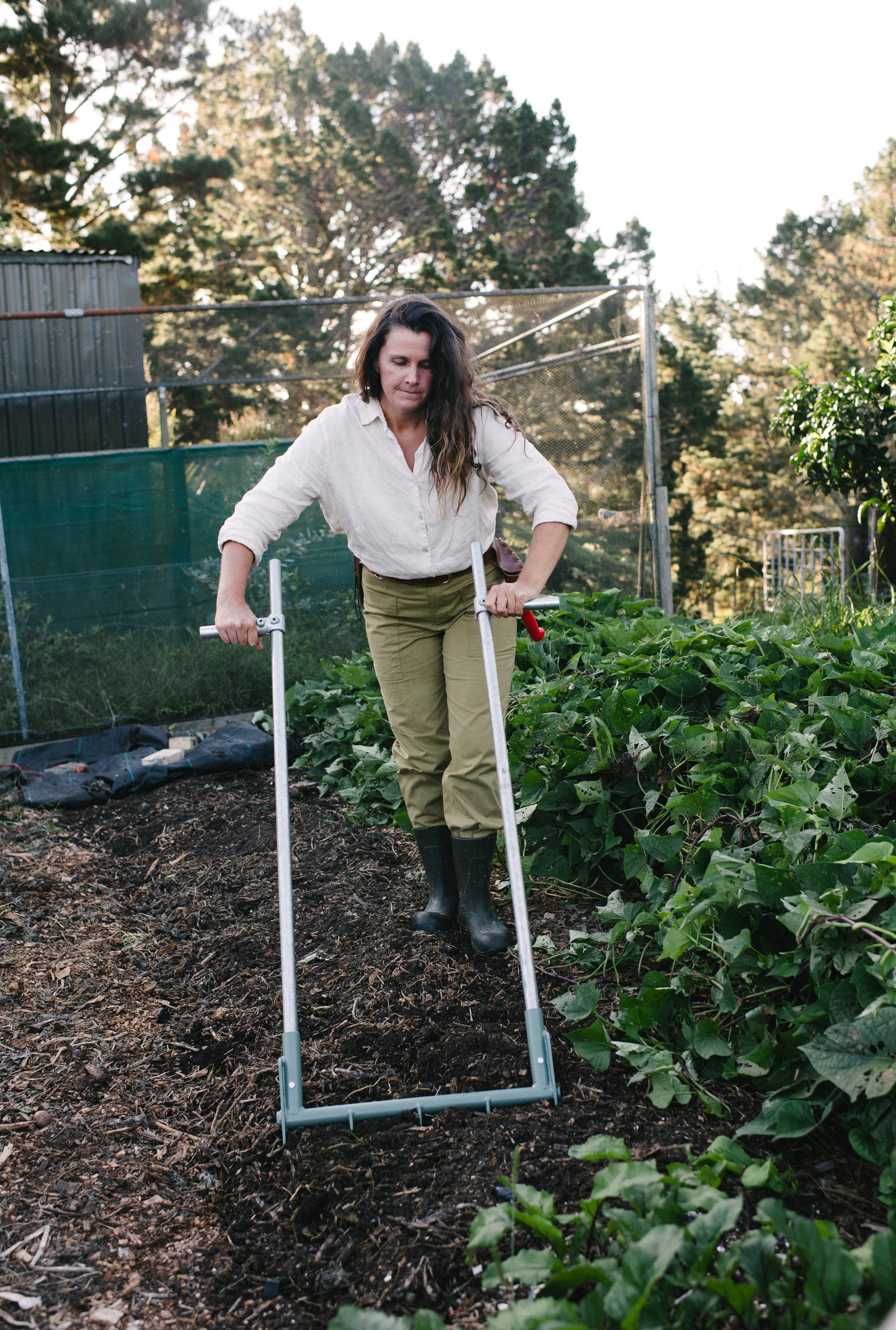Quality Garden Tools. Crafted in New Zealand.
Menu
-
- Home
-
Shop
-
Garden Accessories
- The Gatherer's Balm - Whipped tallow and hemp cream
- Gatherer's balm Gift pair (2 x100ml)
- Garden Belt
- Clark Cultivator
- Seed Raising Tray
- Seed Saving Screens
- Biochar Burner
- Compost Toilet
- Garden dibber
- Paper Pot Maker
- Svord whittling knife w/ leather sheath
- Garden Hook
- Beginner’s Guide to Pruning Fruit Trees by Kath Irvine
- Garden Forks
- Broadforks
- Gathered sets
-
Garden Accessories
- Our Vision
-
- Login
-
NZD

Quality Garden Tools. Crafted in New Zealand.
A column with no settings can be used as a spacer
Link to your collections, sales and even external links
Add up to five columns
A column with no settings can be used as a spacer
Link to your collections, sales and even external links
Add up to five columns
Add description, images, menus and links to your mega menu
A column with no settings can be used as a spacer
Link to your collections, sales and even external links
Add up to five columns
Add description, images, menus and links to your mega menu
A column with no settings can be used as a spacer
Link to your collections, sales and even external links
Add up to five columns

The Bountiful Benefits of Biochar: A Simple Solution for Regenerating Soil
April 24, 2025 3 min read
At Crafty Gatherer, we believe that how we grow our food plays a crucial role in healing and regenerating our planet. Every small step we take to improve our soil and reduce our environmental impact can help pave the way for a more sustainable and thriving earth. One powerful tool in our journey toward better soil health is biochar, a simple yet effective way to boost soil fertility and capture carbon.
What is Biochar?
Biochar is essentially charcoal, but not the kind you find at the store for your barbecue. Instead, it’s a form of charcoal produced through a process called pyrolysis, where organic material—such as wood chips, twigs, or even dried manure—is heated in a low-oxygen environment. This process releases gases and liquids, leaving behind a stable, carbon-rich material known as biochar.
What makes biochar so special is its incredibly porous nature. It’s like a sponge with a massive surface area, which makes it a perfect home for beneficial microbes that help break down organic material in the soil. Just one gram of biochar can have around 25 square meters of surface area, allowing it to absorb and hold onto nutrients and water in the soil, which helps reduce leaching and improves soil structure over time.

The Many Benefits of Biochar for Soil
Biochar is a powerful tool for soil regeneration. When properly inoculated (charged) with nutrients, it helps increase soil fertility and water retention, making it ideal for both sandy and compacted soils. It’s especially beneficial for improving aeration in dense, heavy soils, while also boosting the water-holding capacity of sandy soils.
Because of its negative charge, biochar can bind to positively charged nutrients like nitrogen, potassium, and calcium—preventing these valuable elements from leaching away with water. Biochar also helps to bind heavy metals in contaminated soils, preventing them from entering the food chain.
But perhaps the most exciting benefit of biochar is its ability to store carbon. By capturing carbon and locking it in the soil for hundreds or even thousands of years, biochar helps mitigate climate change by reducing the amount of carbon in the atmosphere.
Why Is Carbon Important in Soil?
Soil is a massive carbon sink, holding roughly twice as much carbon as the atmosphere. Carbon is the foundation of soil health, structure, and fertility, and it releases nutrients essential for plant growth. When we lose carbon from the soil and release it into the atmosphere, it contributes to the greenhouse gases that drive climate change. By keeping carbon in the soil through biochar, we can help restore balance and increase the resilience of our ecosystems.
How to Make Your Own Biochar
Making biochar can be a fun and rewarding project. There are various methods you can use, from simple DIY biochar burners to more elaborate setups. At Crafty Gatherer, we’ve experimented with burners made from old gas bottles, stainless steel tubes, and even milo cans, but we’ve found that creating a biochar burner designed specifically for home gardeners is one of the most efficient and sustainable methods.
Our Crafty Gatherer Biochar Burner is designed to work in tandem with your existing fireplace or brazier, so you’re not wasting energy—you’re using heat that’s already being generated to create biochar. The result is a highly efficient process that not only makes biochar but also allows you to use the heat for cooking or boiling water, all while contributing to a more sustainable lifestyle.

How to Use Biochar in Your Garden
Once you’ve made your biochar, it’s important to charge it before using it in your garden. Biochar is a bit like a sponge—it needs to be soaked in nutrients before it can start doing its job. You can charge it by soaking it in compost tea, manure, or even using Marco’s favorite method: soaking it in urine. Once charged, biochar can be added directly to your soil or compost pile, where it will improve soil health, increase microbial activity, and retain moisture and nutrients.
Final Thoughts: Making a Difference, One Charred Piece at a Time
Biochar is more than just a soil amendment—it’s a way to contribute to the health of our planet. By making biochar and using it in our gardens, we’re not only improving soil health but also helping to combat climate change. And the best part? Biochar lasts for centuries in the soil, so its benefits continue for generations to come.
At Crafty Gatherer, we’re excited to share the benefits of biochar and offer tools to make it easy for home gardeners to get started. Whether you’re new to biochar or looking for a more efficient way to produce it, we’ve got you covered with our Crafty Gatherer Biochar Burner and tips for using it in your garden. Ready to give it a try?


